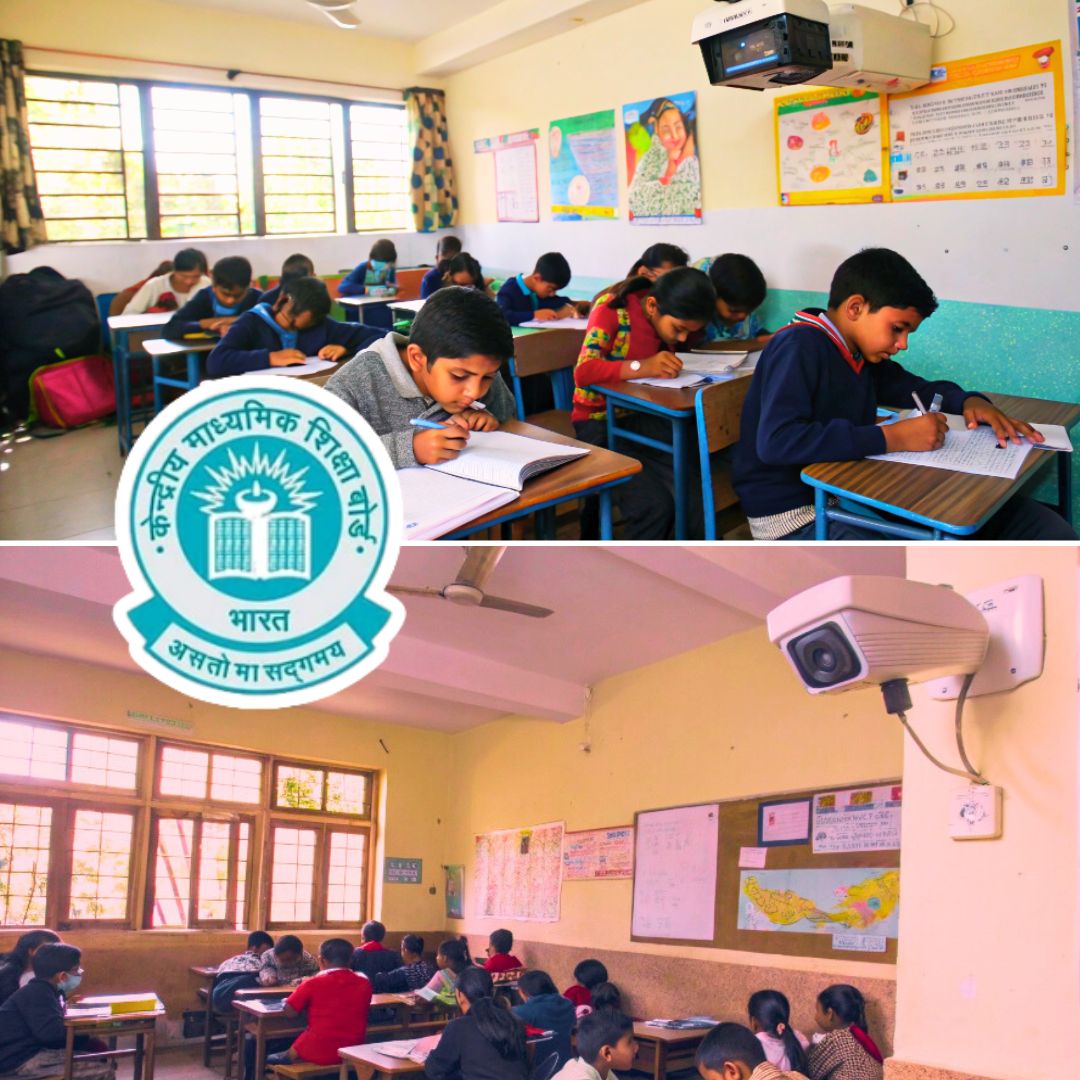The Central Board of Secondary Education (CBSE) has introduced a comprehensive mandate requiring all its affiliated schools to install high-resolution CCTV cameras equipped with real-time audio and video monitoring capabilities in multiple key areas of their campuses.
This directive, issued on July 21, 2025, updates the Affiliation Bye-Laws 2018 under Chapter 4, concerning physical infrastructure, and aims to significantly bolster student safety and security across India’s roughly 31,000 CBSE schools. The cameras must cover classrooms, corridors, staircases, laboratories, libraries, canteens, storerooms, playgrounds, and entry and exit points, while explicitly excluding toilets and washrooms to protect privacy.
Schools are required to retain footage for at least 15 days and keep backups accessible to authorities when requested. Non-compliance with this mandate may risk a school’s affiliation status, underscoring the seriousness with which the Board views student safety.
Expanded Surveillance Mandate for Safer School Spaces
The move builds on earlier CCTV policies introduced by CBSE for board examination centres safeguarding exam integrity, now extended to general school surveillance to help prevent bullying, abuse, and other safety concerns at the campus level.
CBSE Secretary Himanshu Gupta reflected the urgency behind this initiative, citing several recent incidents involving student abuse in some states. He emphasised that the directive is a safety measure rather than a punitive one, highlighting the shared responsibility of school administrators, teachers, support staff, and even visitors in fostering a secure environment.
Gupta also stated that CBSE expects all schools to fully implement these guidelines within a month, after which compliance data will be collected. School principals have broadly welcomed the mandate but stress proper maintenance and regular functionality checks to ensure effectiveness.
NCPCR Guidelines and the Importance of Surveillance for Child Safety
This policy aligns closely with the recommendations set forth by the National Commission for Protection of Child Rights (NCPCR) in its 2021 Manual on Safety and Security of Children in Schools. The manual advocates for creating emotionally and physically safe environments, recognising that school safety encompasses protection from physical harm, bullying, psychological stress, and emotional abuse.
Regular CCTV surveillance with audio-visual recording facilitates early detection of safety threats and supports swift intervention, which is critical to protecting students’ holistic well-being. By institutionalising such surveillance, CBSE aims to standardise safety protocols nationwide and elevate overall student welfare.
The Logical Indian’s Perspective
The CBSE’s CCTV mandate is a prudent and responsible step toward safeguarding children in their daily learning environments. Surveillance technology, when deployed transparently and with respect for privacy boundaries, can deter misconduct and provide a layer of protection that promotes peace and emotional security. The addition of real-time audio-visual monitoring empowers school authorities and parents alike to respond quickly to incidents that could otherwise go unnoticed, ultimately fostering a stronger sense of security.
However, while technology can act as a protective shield, it must be deployed with a profound respect for privacy boundaries. The exemption of toilets and washrooms from monitoring is an important reminder that safeguarding safety should never come at the cost of violating dignity. The key to success lies in maintaining a delicate balance—ensuring vigilance without creating an atmosphere of suspicion or fear.
Schools should view surveillance as a tool to build trust and transparently communicate its purpose to students, parents, and staff. Open dialogue about why and how these systems are used can alleviate anxieties and prevent misunderstandings. Privacy policies must be clear, data must be securely stored, and access to footage should be strictly regulated to preserve this trust.
Moreover, technology alone cannot create safe environments. Safety protocols should be embedded in a larger culture of empathy, kindness, and mutual respect. Schools must actively encourage conversations among educators, students, and families that promote emotional intelligence, inclusiveness, and conflict resolution without violence.











